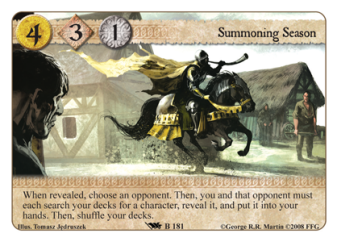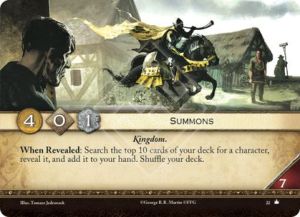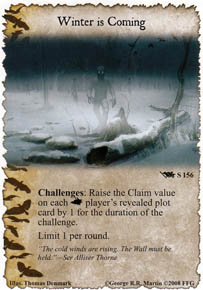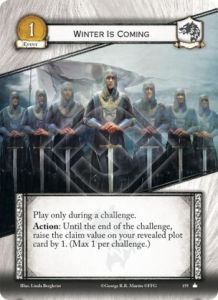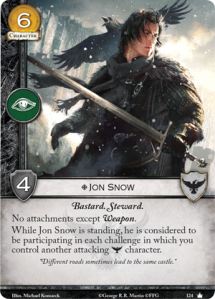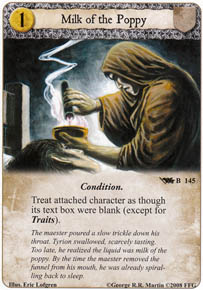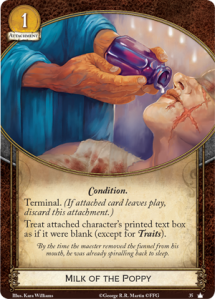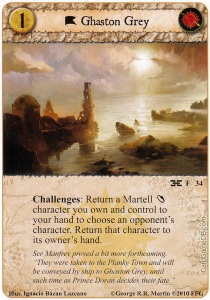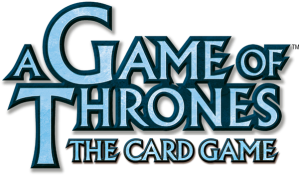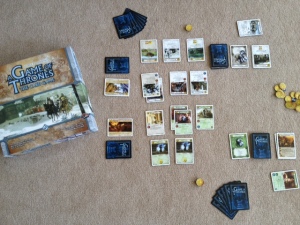Now, there’s a clickbait title. I also recognize that it’s one that’s liable to get me lynched, but I figure if I’m going to do product review blogs, I should try to offend at least some people.
So, with that explained, let’s begin:

VS.

If you haven’t heard of Force of Will, I don’t particularly blame you. It’s a Japanese game, and it’s been available in North American markets for less than two years. Most of the advertising seems to have been done through distributors rather than directly to customers.
If you haven’t heard of Magic: the Gathering, I have no idea what you’re doing reading this blog or anything online with the word “game” in it. Magic is ubiquitous and inescapable. Walk into any card/board game store on a Friday night, and you will likely see people playing.
That being the case, I will spare you the redundancy of explaining what Magic is like. If you happen to have somehow avoided all knowledge of this game, a quick google search will give you all the information you ever wanted. And maybe some that you didn’t.
Force of Will, however, likely deserves an explanation.
To be honest, the games share many points of similarity- so much so that I frankly wonder how Force of Will is avoiding legal action on the part of Wizards of the Coast.
In Force of Will, two players engage in battle; using magical energy of five different elements, they cast spells, summon warriors, and create modifications to the field or said warriors, with the end goal of damaging their opponent sufficiently to reduce their life points to 0. Sound familiar? Yeah.
Maybe the five elements are different? Nope. Darkness, Fire, Light, Water, Wind. Wind is green because Japanese culture associates green and living forests with wind (see Legend of Zelda: Ocarina of Time for another good example of this), but otherwise the colors are exactly what you’d expect them to be.
The card types will also largely be familiar to you. You’d got Resonators, who have Attack and Defense scores and are sent out to damage your opponent (Creatures), Spell: Chant cards that can only be cast on your turn (Sorceries), Spell: Chant-Instant cards than can be cast whenever (Instants), Additions that are generally added to a Resonator or just onto the field (Enchantments), but then we get into territory that differentiates Force of Will from Magic.
Spell: Chant-Standby cards are spells that you pay for (either with 2 of any color, or their printed cost), but then they go into play face down, wait around for a specific condition, and then trigger without additional cost. I have no experience with Yu-Gi-Oh!, but I’m told it’s similar to that game’s Trap cards- I think it’s adds an interesting dimension of strategy to the game.
More significant, perhaps, are the Ruler cards. Every Force of Will deck has one, in fact every deck NEEDS one. Here’s an example:
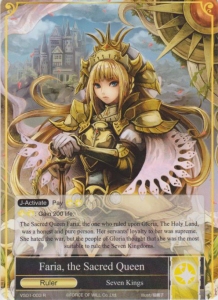
You can’t read her text too clearly, but if you click on her, you’ll see a larger image. It’s cool, I’ll wait.
Okay, so there’s some text on there that probably doesn’t make a lot of sense- I’ll get there. What’s important is the every Force of Will deck has one of these, and there are many to choose from. They often have some abilities, but there is one thing not written on the cards that they do, and it’s their most important function: calling Magic Stones.
Okay, so note that I haven’t said anything about an equivalent to basic land yet- well, those are the Magic Stones, but unlike Magic they don’t sit in your main deck. Instead, they occupy their own secondary deck, the aptly named Magic Stone deck. The primary way, often the only way, that you get Magic Stones out of their deck and into play is through your Ruler.
Your Ruler may be rested (tapped) once per turn to put the top card of your Magic Stone deck into play. Now, if you’re playing a simple deck with only one color, then the fact that you’re blindly taking the top card doesn’t mean much, but like Magic has dual-lands that can produce two different colors of mana, there are Special Magic Stones that can generate two different Will Attributes. There are also True Magic Stones with special abilities, but these are extremely rare.
Rulers may have other abilities, such as Faria here’s ability to give you 200 life at the cost of two Light Will (if those numbers seem high, there’s a reason for that. Another trend in Japanese games seems to be to have unnecessarily high numbers. In the case of Force of Will, every attack/defense/life number can be safely divided by 100.). This introduces an aspect of strategy that I find interesting: balancing your desire for more Magic Stones against the desire to play your Ruler’s abilities, especially if they require resting the Ruler.
The majority of Rulers (but not all) also have a cost listed as J-Activate. The J is short for Judgement, and paying that cost results in you flipping the card over to the other side:
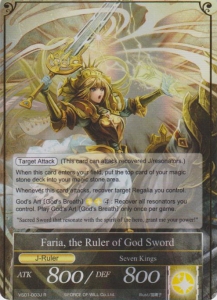
You’ll notice the shift in abilities, but also the addition of an ATK and DEF scores, enabling her to engage in combat; to attack, to block, but also to be attacked.
These elements make your Ruler as important a choice as practically the rest of your deck combined, and a well timed J-Activation can be the difference between victory and defeat.
By now you might be thinking, “But Chris, this article would have been better named ‘How Force of Will is Like Magic, but also Different.'” And you’d be right. But as I said, it was partly clickbait, but also because I needed to explain these differences before I would explain my reasons.
The Magic Stones are a big part of it, honestly. One of the things that came to bug me about Magic was that the Mana you need to play the cards in your deck come from cards that are also in your deck. Putting the Magic Stones in a separate deck, and working a mechanic for fetching them into the basic game rules creates what I think is a much more balanced play environment. Yes, you can still get starved for the Will Attribute (color) you’re really looking for, or flooded with one you aren’t, but it’s much less likely- and next to impossible in a mono color deck.
Maybe some players prefer that gamble, that no matter how good you or your deck are, there’s always that chance that your land will be clumped by your shuffle, and you’re doomed. Cool. I don’t.
I also do really like the Rulers, I think they’re a fun addition to the general mechanic, and allow for even more variety and personalization in deck construction.
Lastly, Force of Will has a very open turn sequence. In Magic (basically speaking) you have your Main Phase where you play cards, your Battle Phase where you can attack, a second Main Phase, and then you’re done.
In Force of Will, the Main Phase encompasses battle as well. You can play a Resonator, attack, then play another, attack again, then call a stone, attack again- on and on in whatever combination you like (as long as you have resources to use, of course). It is probably the least restrictive card game I’ve ever played in terms of when you can play what card, or activate an ability.
All in all, these elements create a play experience that I just find more enjoyable. I have constructed three Force of Will decks in relatively short order, and I have inspiration for at least three more. I know that doesn’t sound like much compared to hard core cardgamers, but it’s actually quite a lot for me. I went a long time before I made even a second Game of Thrones deck.
And, to top it off, now is an excellent time to look at starting the game. A new set of Force of Will drops September 25th, the equivalent of a new Block in Magic, and it has already whipped up a fury of interest an excitement in the community.
And, to plug local events as well, anyone interested in checking out the game can hop by the store (Tramp’s, this blog’s host) on a Wednesday evening and check it out- we have weekly tournaments.
That’s all for now from Chris. Happy gaming!


